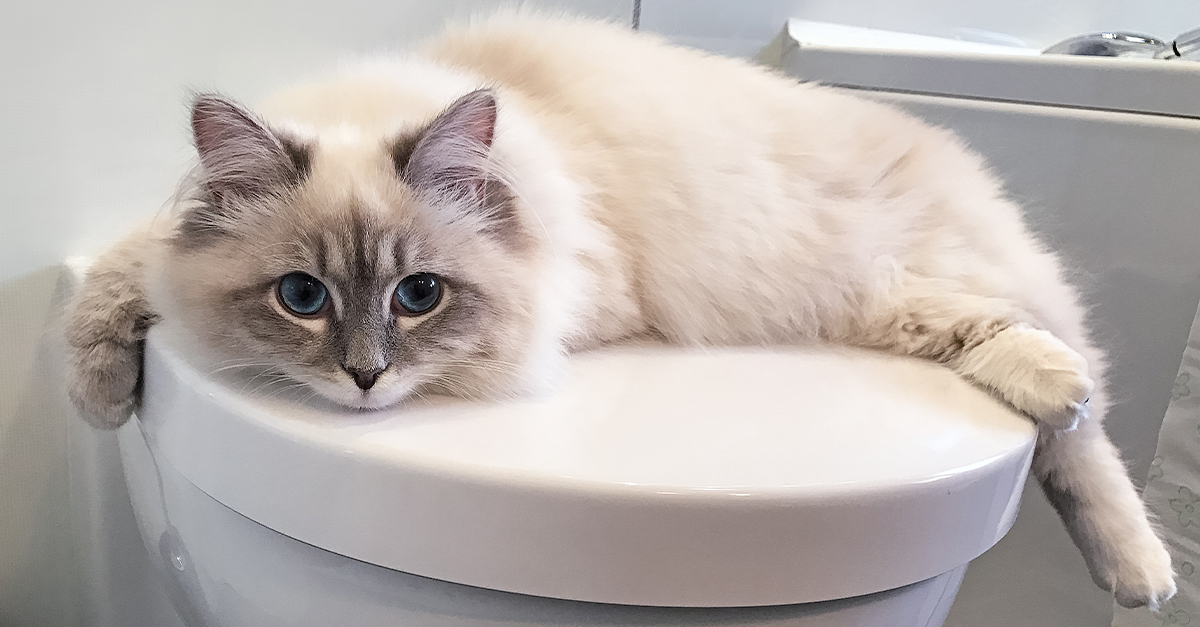Avoid Flush Cat Poop Down Your Toilet - Maintain Your Home's Plumbing System
Avoid Flush Cat Poop Down Your Toilet - Maintain Your Home's Plumbing System
Blog Article
The publisher is making a number of great points related to Don’t flush cat feces down the toilet overall in this content followed below.

Introduction
As feline proprietors, it's necessary to be mindful of just how we dispose of our feline buddies' waste. While it might appear hassle-free to purge pet cat poop down the commode, this method can have detrimental consequences for both the atmosphere and human health and wellness.
Ecological Impact
Purging pet cat poop presents damaging microorganisms and parasites into the water supply, posturing a considerable danger to water ecological communities. These impurities can negatively affect marine life and concession water quality.
Health Risks
In addition to ecological worries, flushing cat waste can additionally present wellness dangers to human beings. Cat feces might consist of Toxoplasma gondii, a bloodsucker that can create toxoplasmosis-- a possibly serious health problem, especially for expecting women and individuals with damaged immune systems.
Alternatives to Flushing
The good news is, there are safer and extra responsible means to dispose of cat poop. Consider the following options:
1. Scoop and Dispose in Trash
One of the most usual technique of dealing with feline poop is to scoop it into a biodegradable bag and toss it in the trash. Make certain to make use of a devoted trash inside story and dispose of the waste immediately.
2. Usage Biodegradable Litter
Opt for biodegradable feline clutter made from materials such as corn or wheat. These trashes are eco-friendly and can be safely dealt with in the trash.
3. Bury in the Yard
If you have a yard, consider hiding cat waste in a marked area away from vegetable yards and water resources. Make sure to dig deep sufficient to stop contamination of groundwater.
4. Install a Pet Waste Disposal System
Buy a family pet waste disposal system especially developed for feline waste. These systems use enzymes to break down the waste, minimizing smell and ecological effect.
Conclusion
Accountable family pet possession prolongs beyond providing food and sanctuary-- it additionally involves proper waste administration. By refraining from flushing feline poop down the toilet and choosing different disposal methods, we can minimize our environmental impact and safeguard human wellness.
Why Can’t I Flush Cat Poop?
It Spreads a Parasite
Cats are frequently infected with a parasite called toxoplasma gondii. The parasite causes an infection called toxoplasmosis. It is usually harmless to cats. The parasite only uses cat poop as a host for its eggs. Otherwise, the cat’s immune system usually keeps the infection at low enough levels to maintain its own health. But it does not stop the develop of eggs. These eggs are tiny and surprisingly tough. They may survive for a year before they begin to grow. But that’s the problem.
Our wastewater system is not designed to deal with toxoplasmosis eggs. Instead, most eggs will flush from your toilet into sewers and wastewater management plants. After the sewage is treated for many other harmful things in it, it is typically released into local rivers, lakes, or oceans. Here, the toxoplasmosis eggs can find new hosts, including starfish, crabs, otters, and many other wildlife. For many, this is a significant risk to their health. Toxoplasmosis can also end up infecting water sources that are important for agriculture, which means our deer, pigs, and sheep can get infected too.
Is There Risk to Humans?
There can be a risk to human life from flushing cat poop down the toilet. If you do so, the parasites from your cat’s poop can end up in shellfish, game animals, or livestock. If this meat is then served raw or undercooked, the people who eat it can get sick.
In fact, according to the CDC, 40 million people in the United States are infected with toxoplasma gondii. They get it from exposure to infected seafood, or from some kind of cat poop contamination, like drinking from a stream that is contaminated or touching anything that has come into contact with cat poop. That includes just cleaning a cat litter box.
Most people who get infected with these parasites will not develop any symptoms. However, for pregnant women or for those with compromised immune systems, the parasite can cause severe health problems.
How to Handle Cat Poop
The best way to handle cat poop is actually to clean the box more often. The eggs that the parasite sheds will not become active until one to five days after the cat poops. That means that if you clean daily, you’re much less likely to come into direct contact with infectious eggs.
That said, always dispose of cat poop in the garbage and not down the toilet. Wash your hands before and after you clean the litter box, and bring the bag of poop right outside to your garbage bins.
https://trenchlesssolutionsusa.com/why-cant-i-flush-cat-poop/

As a reader about Don’t flush cat feces down the toilet, I imagined sharing that piece was a smart idea. If you liked our article please make sure you remember to share it. Thank you for your time invested reading it.
Check It Out Report this page